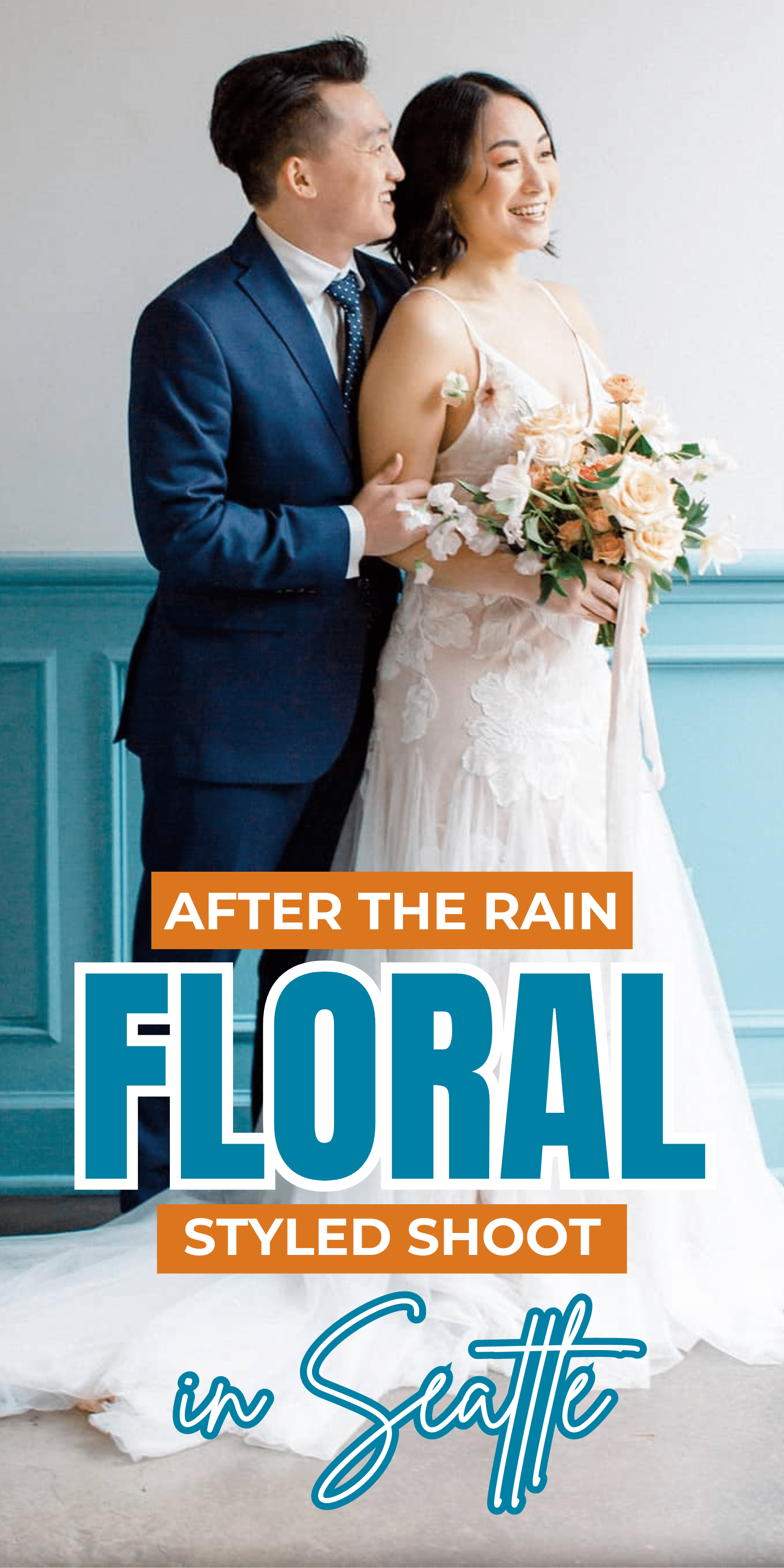Welcome to our exquisite guide on baroque pearls, where we unravel the captivating allure and timeless elegance of these naturally formed treasures. As connoisseurs of luxury and refinement, we invite you to embark on a journey through the fascinating world of baroque pearls and discover their unique charm. Join us as we delve into their origins, characteristics, styling tips, and more.
Let the enchantment begin!
- What are Baroque Pearls?
- How Are Baroque Pearls Formed?
- History, Origin, and Formation
- Types of Baroque Pearls
- Embracing the Uniqueness
- How to Choose Baroque Pearls
- Styling Tips: Embodying Elegance
- Caring for Baroque Pearls: A Tale of Preservation
- The Symbolic Significance
- Baroque Pearls in Art and Culture
- Investing in Baroque Pearls: A Testament to Timeless Beauty
- Famous Baroque Pearl Jewelry Pieces
- Embracing the Extraordinary
 Pin
PinWhat are Baroque Pearls?
Baroque pearls are irregularly shaped pearls that occur naturally in mollusks. Unlike round pearls that have a smooth, uniformly spherical shape, baroque pearls can take on a variety of organic shapes, from teardrop to oval, and have a textured appearance that makes them unique.
One of the reasons why baroque pearls are so valued is because each one is completely unique, making them highly prized by pearl enthusiasts. They come in a wide range of colors, including white, cream, pink, gold, and black, and can be used in a variety of jewelry designs.
Due to their uniqueness, baroque pearls are often more affordable than their round counterparts, making them a popular choice for those looking for something distinctive but affordable.
Baroque pearls are formed in a similar way to round pearls, however, their irregular shape is caused by the mollusk’s muscle moving around irregularly while the pearl is being formed. This is why each baroque pearl has its own distinctive shape.
In recent years, baroque pearls have become increasingly fashionable due to their one-of-a-kind shape and texture, making them an ideal choice for those who appreciate individuality and natural beauty.
Overall, baroque pearls are stunning, unique, and available in a range of colors, making them versatile and highly prized by both jewelry makers and collectors alike.
How Are Baroque Pearls Formed?
Baroque pearls are a type of non-spherical pearls that have a unique shape and character. Unlike traditional round pearls, baroque pearls are irregularly shaped and can come in a variety of sizes.
There are several ways in which baroque pearls can form, but the primary process is by chance. When an irritant, such as a grain of sand or a parasite, enters the oyster or mussel’s body, the mollusk secretes a substance called nacre to coat the foreign object to protect itself. Over time, the layers of nacre build up, forming a pearl.
In the case of baroque pearls, the formation occurs in an irregular manner, resulting in a unique and often asymmetrical shape. The shape and size of these pearls depend on several factors, including the size and shape of the irritant, the location within the mollusk’s body, and the length of time the pearl takes to form.
Baroque pearls can also form when the mollusk is stressed or when there is damage to the pearl sac. In these instances, the nacre is irregularly deposited, resulting in the non-uniform shape of the pearl.
It’s important to note that while the primary process for forming baroque pearls is chance, pearl farmers can influence the shape of the pearls by seeding the mollusk with a particular shape of nucleus, resulting in a more predictable shape.
History, Origin, and Formation
Baroque pearls have a long and rich history that spans centuries. These unique pearls are known for their irregular, non-spherical shapes which make them distinct from traditional round pearls.
One of the earliest recorded mentions of baroque pearls dates back to the 16th century, during the height of the European Renaissance. The popularity of baroque pearls quickly spread throughout Europe, particularly in Italy and Spain where they were highly prized by royalty and the wealthy elite.
During the 18th and 19th centuries, baroque pearls continued to grow in popularity. They were often used to create stunning, intricate jewelry pieces, including necklaces, earrings, and bracelets.
In the early 20th century, the advent of cultured pearls revolutionized the pearl industry. However, even with the increased supply of round, cultured pearls, baroque pearls continued to be cherished for their unique and eye-catching shapes.
Today, baroque pearls remain an important part of the pearl market, with a wide range of colors, sizes, and shapes available. They are often used in modern, contemporary jewelry pieces, and are highly valued by collectors due to their rarity and individuality.
In recent years, baroque pearls have also become popular in the fashion industry, with designers incorporating them into high-end clothing and accessory lines. This has led to increased demand and interest in these beautiful and unique pearls.
Overall, the history of baroque pearls reflects their timeless appeal and enduring popularity, making them a classic and highly sought-after gemstone that continues to captivate jewelry enthusiasts and collectors alike.
Baroque pearls, with their organic and irregular shapes, are born from a serendipitous union between nature’s creative forces and the oyster’s tender embrace. Unlike their perfectly symmetrical counterparts, baroque pearls celebrate individuality and the beauty found in imperfection. Each baroque pearl tells a story of its own, infused with the very essence of the sea.
These exquisite gems are cultivated within a variety of oyster species, including the illustrious Pinctada maxima and Pinctada margaritifera. Born from a nucleus, which can be a small bead or tissue, the oyster lavishes its attention upon this intruder, layering it with luminous nacre. Over time, as layers accumulate, a baroque pearl takes shape, capturing the essence of the ocean in its splendid irregularity.
 Pin
PinTypes of Baroque Pearls
Baroque pearls are unique due to their irregular and non-symmetrical shapes. They come in various sizes and colors, making them an excellent choice for jewelry enthusiasts who want something different and eye-catching. In this section, I will discuss the different types of baroque pearls in more detail.
Kasumiga Pearl
Kasumiga pearls are named after Lake Kasumi-ga-Ura, where they are mainly cultivated. These freshwater pearls are characterized by their metallic-like luster, unique shapes, and intense rainbow colors. Kasumiga pearl’s unique iridescence is a result of light reflection inside the pearl’s nacre layers.
Biwa Pearl
Biwa pearls come from Lake Biwa in Japan. They were very popular worldwide in the 1980s. They are freshwater pearls that usually have an irregular button-like shape and are coveted for their delicate pastel colors. Nowadays, Biwa pearls are rare because of the pollution that contaminated Lake Biwa.
Keshi Pearl
Keshi pearls are formed accidentally when a mollusk rejects the implanted nucleus and coats the inside of the shell with nacre. They can also form during the culturing process and are therefore classified as cultured pearls. Irregular in shape, they boast a natural luster that other baroque pearls cannot match.
South Sea Pearl
The South Sea pearl is the largest of all pearls. They come from the South Sea regions, mainly in Australia, Indonesia, and the Philippines. These pearls have a golden, white, or dark color and an exquisite and elegant luster that is unmatched. The rounder the shape, the higher the value of the South Sea Pearl due to its rarity.
Tahitian Pearl
Tahitian Pearls are unique in their own right as they come in different colors, including green, grey, black, and blue. They are obtained from the black-lip oyster grown in French Polynesia and can exhibit an array of overtones that enhance their luster. Tahitian Pearls are often large and possess an irregular shape, making them a popular choice in haute couture circles.
Embracing the Uniqueness
Baroque pearls, with their beguiling shapes and sizes, offer an unprecedented level of individuality and versatility in the realm of fine jewelry. Whether you prefer the delicate hues of pastel pink, the mysterious depths of midnight black, or the shimmering iridescence of multicolored pearls, baroque pearls offer a vast palette to ignite your imagination.
Each baroque pearl possesses an enchanting combination of curves, ridges, and contours, making it a captivating centerpiece for any jewelry creation. From statement necklaces and dangling earrings to ornate bracelets and exquisite rings, the possibilities are endless. Embrace the allure of baroque pearls and adorn yourself with their organic elegance.
How to Choose Baroque Pearls
When it comes to choosing baroque pearls, there are several factors to consider.
Size
Baroque pearls come in different sizes, ranging from small to large. The size of the pearl can affect its overall value and appearance. It’s important to choose a size that compliments your personal style and fits within your budget.
Shape
Since baroque pearls are non-symmetrical, they come in unique shapes that can vary from one pearl to another. Some of the common shapes include elongated, oval, and irregular. The shape of the pearl can affect how it hangs from a piece of jewelry and its overall appearance.
Luster
The luster of a baroque pearl can greatly impact its value, as it refers to the pearl’s ability to reflect light and create that coveted iridescent glow. When choosing a pearl, look for brightness, sharpness, and clarity in its luster.
Color
Baroque pearls come in a range of colors, from white to black and everything in between. Some may even have a hint of pink, green, or blue. Consider what colors complement your wardrobe and personal style when selecting a pearl.
Surface
While baroque pearls are known for their unique and irregular shapes, their surface can also make them stand out. Some pearls may have bumps, ridges or other surface irregularities, which can add character to the pearl and make it a unique piece of jewelry.
When picking a baroque pearl, it’s important to consider your personal style, budget, and what you will be using it for. A reputable jeweler can help guide you through the process and make sure you find the perfect pearl for you.
Styling Tips: Embodying Elegance
Unleash your creativity and elevate your style with the enigmatic charm of baroque pearls. Here are some styling tips to inspire your journey:
- Minimalist Chic: Embrace the art of simplicity by pairing a single baroque pearl pendant with a sleek chain. Let the pearl be the focal point, radiating an air of understated elegance.
- Bohemian Dream: Combine the free-spirited essence of boho fashion with the organic allure of baroque pearls. Layer long necklaces adorned with multiple pearls and pair them with flowing maxi dresses or fringed tops for a whimsical look.
- Contrasting Glam: Embrace the intriguing contrast of baroque pearls against dark, sultry attire. Opt for a black evening gown or a tailored jumpsuit and accessorize with a statement piece featuring lustrous baroque pearls to exude sophistication.
- Nature’s Symphony: Capture the essence of the natural world by incorporating baroque pearls into floral-inspired designs. Choose jewelry adorned with delicate petals, leaves, or branches, and let the pearls accentuate the beauty of nature.
Remember, the key to styling with baroque pearls is to embrace their irregularity and celebrate their distinctive charm. Allow these enchanting gems to harmonize with your personal style and create a captivating visual narrative.
 Pin
PinCaring for Baroque Pearls: A Tale of Preservation
To ensure your baroque pearls retain their timeless beauty, proper care is paramount. Here are a few tips to help preserve their luster and grace:
- Gentle Cleansing: Cleanse your baroque pearls regularly with a soft, lint-free cloth to remove any accumulated dirt or oils.
- Avoid Chemicals: Keep your baroque pearls away from harsh chemicals, including perfumes, cosmetics, and household cleaning agents. These substances can potentially damage the delicate nacre and compromise the lustrous glow of your pearls.
- Storage Considerations: Store your baroque pearls separately from other jewelry pieces to prevent scratching or tangling. Consider using a soft pouch or a jewelry box lined with a gentle fabric, such as satin or velvet, to protect their surface.
- Moisture Control: Pearls are organic gems and can be sensitive to excessive moisture. Avoid wearing your baroque pearls when engaging in water activities, bathing, or swimming. Additionally, wipe them gently with a dry cloth after each wear to remove any residual moisture.
- Regular Inspection: Periodically examine your baroque pearls for any signs of damage or loosening of the setting. If you notice any issues, promptly seek the assistance of a professional jeweler for necessary repairs.
By following these simple care instructions, you can ensure that your baroque pearls continue to radiate their alluring charm and grace for generations to come.
The Symbolic Significance
Beyond their aesthetic appeal, baroque pearls hold a rich symbolic significance that adds depth to their allure. Throughout history, pearls have been revered as symbols of purity, wisdom, and feminine energy. Baroque pearls, with their distinctive shapes, embody the idea that true beauty lies in embracing uniqueness and celebrating individuality.
Wearing baroque pearls can serve as a reminder to cherish our own imperfections and find beauty in the irregularities of life. These enchanting gems encourage us to embrace our authentic selves and to embrace the beauty found in the unconventional.
Baroque Pearls in Art and Culture
Baroque pearls have captivated artists, designers, and artisans for centuries, inspiring remarkable creations across various art forms. From intricately designed jewelry to embellishments on regal attire, baroque pearls have left an indelible mark on the artistic landscape.
In literature, pearls have been described as tears of gods and mermaids, coveted treasures that symbolize purity and wealth. Renowned artists have immortalized the allure of baroque pearls through their paintings, sculptures, and decorative arts, allowing us to marvel at their beauty and contemplate their profound symbolism.
Investing in Baroque Pearls: A Testament to Timeless Beauty
As with any exquisite gem, baroque pearls can also be a valuable investment for those seeking to acquire treasures of enduring beauty. Their rarity, unique shapes, and captivating allure make them highly sought after by collectors and enthusiasts alike.
When considering the purchase of baroque pearls, it is essential to evaluate their quality based on factors such as shape, luster, surface quality, and size. Seeking the guidance of reputable jewelers or experts in the field can ensure that you make an informed investment and acquire pearls of exceptional value.
Famous Baroque Pearl Jewelry Pieces
Baroque pearls have been in demand since ancient times due to their unique and irregular shape, making each pearl a one-of-a-kind piece. This section will highlight some of the most famous baroque pearl jewelry pieces.
- The Pearl of Allah: Also known as the Pearl of Lao Tzu, this giant baroque pearl weighs a whopping 14 pounds. It was discovered in the Philippines in the 1930s and is valued at over $40 million.
- Elizabeth Taylor’s La Peregrina Pearl: This teardrop-shaped baroque pearl was once owned by King Philip II of Spain and was later given to Elizabeth Taylor by Richard Burton as a Valentine’s Day gift. The pearl was set into a necklace with diamonds and rubies and sold for $11.8 million at auction in 2011.
- Jewels of the Romanovs: This historic collection of Romanov family jewels features several pieces incorporating baroque pearls, including a brooch featuring a large baroque pearl surrounded by diamonds and emeralds.
- Queen Victoria’s Pearl Earrings: These stunning baroque pearl earrings were a favorite of Queen Victoria and were eventually passed down to Queen Elizabeth II. They are made of two large baroque pearls set in gold with diamond accents.
- The Baroda Pearl Necklace: This 7-strand pearl necklace incorporates over 350 pearls, including several large baroque pearls. It was owned by the Maharaja of Baroda and was later sold at auction for over $7 million.
Baroque pearls offer a unique and magical charm, and these famous jewelry pieces showcase their beauty and versatility in fashion. Whether in their natural shapes or as incorporated into intricate designs, baroque pearls have certainly left a lasting impression on the world of jewelry.
Embracing the Extraordinary
In this comprehensive guide, we have explored the enchanting beauty of baroque pearls, uncovering their origin, embracing their uniqueness, providing styling tips, discussing care instructions, and delving into their symbolic significance. We have also highlighted their presence in art, culture, and their potential as a valuable investment.
Baroque pearls offer a gateway to a world where individuality reigns and beauty is found in the unexpected. Their allure transcends traditional norms, inviting us to embrace our own distinctive qualities and celebrate the extraordinary.
As you embark on your own journey with baroque pearls, remember to seek out reputable sources, jewelers, and experts who can guide you in selecting the perfect piece that resonates with your personal style and preferences. Whether you choose a delicately cascading necklace, a pair of mesmerizing earrings, or an exquisite bracelet, let each baroque pearl become a testament to your own unique story.
Now that you are equipped with knowledge about the captivating charm of baroque pearls, it is time to embark on your own exploration and let their ethereal beauty adorn your life. Embrace their irregularity, cherish their individuality, and revel in the magic that these remarkable gems have to offer.
Step into a world where baroque pearls reign supreme and discover the timeless elegance that sets them apart. Indulge in their lustrous allure, and let the radiance of baroque pearls illuminate your style and spirit.
Welcome to the captivating world of baroque pearls – where beauty defies convention and enchantment knows no bounds.













Leave a Reply